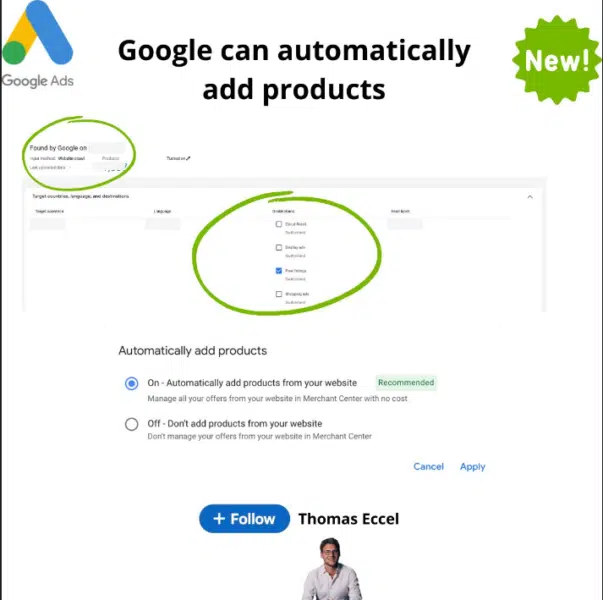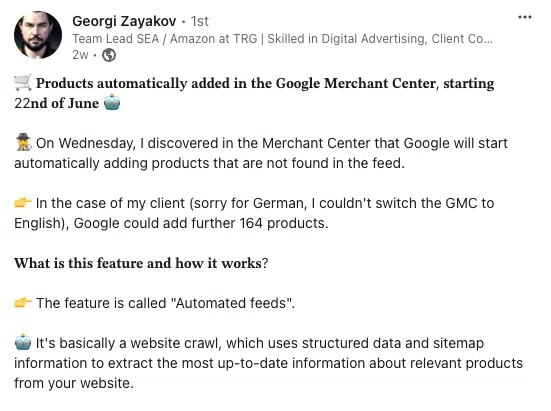Google streamlines product listings via website crawl
Google is making it easier for merchants to surface product listings across its surfaces through automated 'website crawl' feeds.
Google is making it easier for merchants to pull in product listings from their sites through automated “website crawl” feeds in Merchant Center.
How it works. Google uses structured data markup on merchant websites to automatically extract up-to-date product information like titles, pricing, availability and images.
The big picture. The automated feeds aim to reduce the work required to keep product listings current as assortment and pricing changes – a challenge with traditional feed file uploads.
Why we care. This update could help reduce manual grunt work when it comes to updating product listings in the Merchant Center, although there may be a learning curve to ensure all products have the correct schema markup, which may not be the advertisers’ role in the marketing team.
The details. To use automated feeds, merchants must implement required schema.org markup for product details like:
- Title [title]
- Price [price]
- Availability [availability]
- Image [image_link]
Additional attributes like GTIN, brand, size and condition can further enrich listings when provided via markup or supplemental feeds.
What’s new. Some merchants now see an alternative “Website” feed experience that allows them to simply toggle automated product ingestion on/off in the Merchant Center.
Products get automatically added or removed from the Merchant Center based on the website crawl.
It complements other product data sources without duplication.
The challenges. Proper structured data implementation is key, as is managing crawl directives via sitemaps and robots.txt to avoid indexing issues.
What they’re saying. “Supplemental feeds provide additional information…and you can refresh [them] more often,” per Google’s automated feed documentation.
Between the lines. Automated feeds align with Google’s push toward entities and structured data as core to its modern “AI-first” approach across products.
First spotted. I first spotted this news on Thomas Eccel’s profile, but it was initially picked up by Georgi Zayakov:


Bottom line. By reducing manual feed labor, automated product ingestion could lower barriers for merchants to participate across Google’s growing array of surfaces like Search, Shopping, Images and more.
Related stories